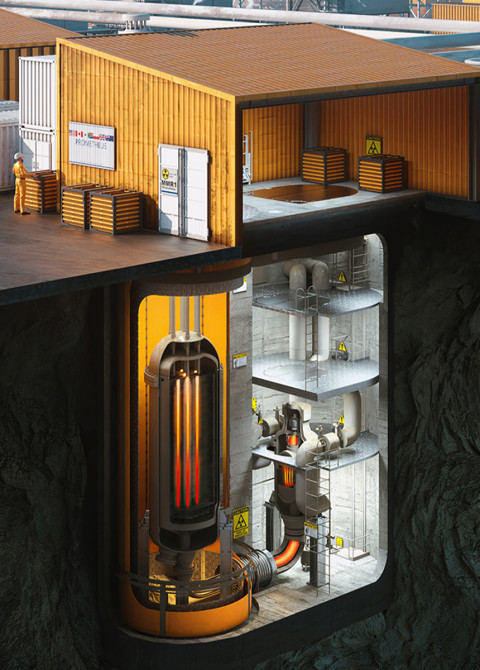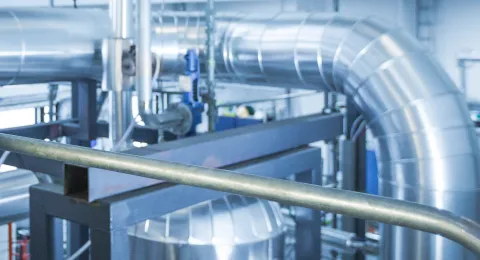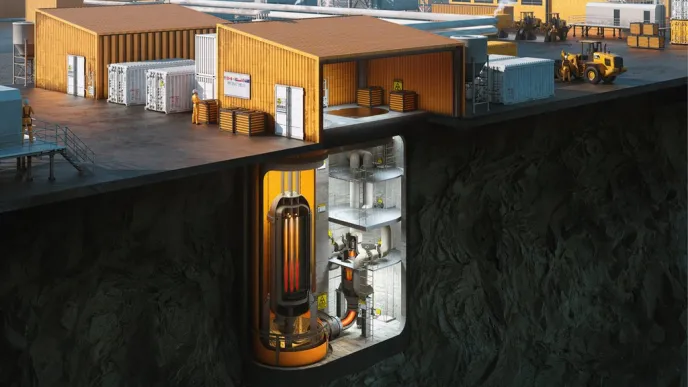Nuclear power is one of Finland's most significant low-carbon energy sources. Recently, small modular nuclear reactors, SMRs, have also come up as a promising solution for low-emission district heat production, for example. In 2023, 38 per cent of district heat in Finland was produced with fossil fuels and peat.
"The use of SMRs in district heat production is currently being considered in several cities in Finland, so it is a very topical subject," says Matti Kojo, Associate Professor at LUT's Department of Social Sciences.
A nuclear power plant in the middle of a population centre?
In his research, Kojo discusses nuclear power from the perspective of justice. Together with his research assistant Anni Vainio, he has written a chapter on the justice of SMRs in the book Oikeudenmukainen siirtymä Suomessa 2025, published at the end of October.
In particular, two issues come up in the debate on just small modular reactors. The first is the location of SMRs.
As the name implies, SMRs used for district heat production are significantly smaller than conventional nuclear plants. They would also be placed differently. Since district heating is always produced locally, SMRs used for its production should be located in population centres.
"Of course, this can interest the residents, because nuclear power is associated with strong images and views," Kojo says.

Four perspectives on justice
When debating about the siting of SMRs, several aspects of justice intersect. One of them is distributive justice, which concerns the allocation of benefits and disadvantages to different groups of people.
It must also be considered who will be affected by the SMR project in the first place. As the effects of nuclear waste, for example, last for an exceptionally long time, future generations and their involvement must also be taken into account. This is called recognitional justice.
"It would be important to look at vulnerable groups in particular. Public participation requires skills and resources, so groups that do not have these but are affected by the project in question may end up being excluded from the discussion."
From the point of view of restorative justice, it is possible to consider how the potential (negative) effects of the project in question should be compensated. This means not only monetary but also non-monetary means, such as compensating for possible environmental impacts.
On the other hand, it is also possible to examine do all the people and parties affected by the SMR project have the opportunity to be heard and how are they and their views taken into account. This is known as procedural justice.

Almost a hundred different SMR technologies being developed
SMRs are planned to be mass-produced meaning they are modular. This differs significantly from traditional, large nuclear power plants, which are built on site as individual, unique plants. In this kind of serial production, it is particularly important to consider how the benefits and disadvantages of each project are distributed to different groups of people.
"Who pays the start-up costs of the production and who benefits from it? Who agrees to be the guinea pig, so to speak? Who is responsible for the teething problems and the possible failures of the technology? Who ends up paying the bill?" Kojo sums up.
According to Kojo, another question is the technology to be used. Currently, there are almost a hundred different SMR technologies being developed in the world. It is difficult for commercial operators who are thinking of buying an SMR to assess in advance the so-called winning technology. Choosing a losing technology may put the buyer at a disadvantage.
LUT University is an expert in nuclear safety
- LUT is a leading expert in nuclear power and nuclear safety. It coordinates the safety program in the field nuclear power field.
- The thermohydraulics of nuclear power plants is the most important research topic. In addition, LUT's experts study nuclear reactor physics.
- Read more about LUT's nuclear power research.
Uranium and nuclear waste – out of sight, out of mind
In all nuclear power, including SMRs, the biggest issues are related to cosmopolitan, or global justice. It examines the entire value chain of nuclear power, including the production process, from uranium mining to the disposal of nuclear waste.
"It is important to think about where uranium is mined and how ethical and sustainable the mining is? And how can nuclear waste be managed as justly as possible?" Kojo explains.
The questions of global justice in nuclear power have long been a subplot in the Finnish debate. This is where the 'out of sight, out of mind' saying comes true.
According to Kojo, however, the green transition is such a large, cross-border issue that all perspectives should be taken into account in order to understand the impacts of the transition as well as possible.
"Questions about justice are related to all new forms of energy production, not just SMRs. By examining justice, it is possible to understand what a socially sustainable green transition looks like. A good starting point for this is anticipating, recognising and acknowledging, which are required for a just transition," Kojo says.
More information:






